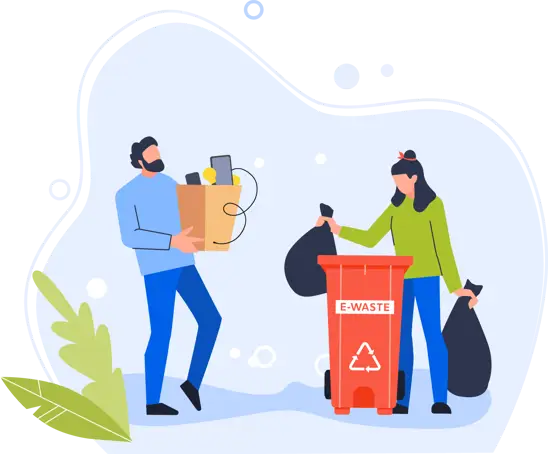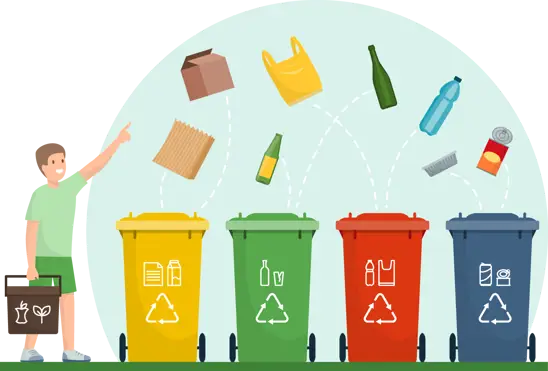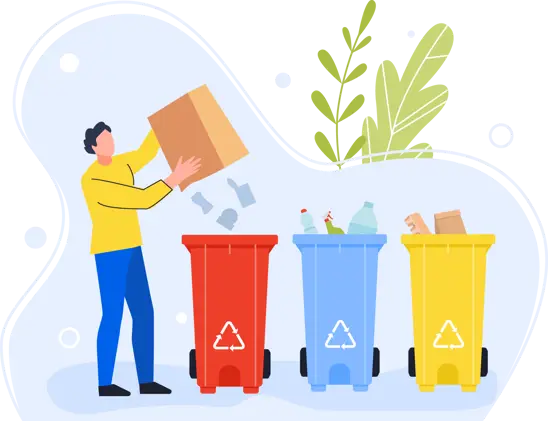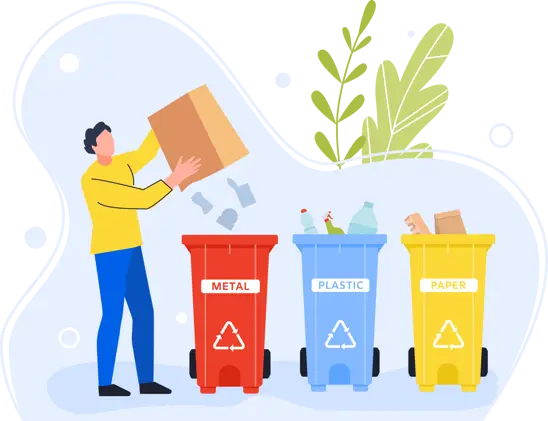
The Benefits of Using Colour-Coded Bins for Effective Waste Segregation
Colour coded bins play a crucial role in effective waste segregation by making it easter to sort waste correctly. It is a simple and effective system that helps improve recycling rates, reduces contamination and supports more sustainable practices.

What Is Waste Segregation and Why It Matters
Waste segregation is the process of separating waste into different categories, often by using colour coding waste segregation systems such as colour coded bins. This process is an efficient recycling system offering safer disposal, and improved environmental management.
The importance of waste segregation is crucial to ensure recyclable, biodegradable, and hazardous materials are treated appropriately, and don’t contaminate one another.

The Importance of Waste Segregation for Sustainability
The importance of waste segregation is its ability to support cleaner resource cycles, and make compliance with waste regulations easier for businesses.
The environmental impact is significantly reduced by waste segregation, as it prevents contamination, conserves resources and supports more efficient recycling processes.
Understanding the Types of Waste Segregation
There are 4 types of waste segregation that form the foundation of effective waste management: organic, recyclable, non-recyclable and hazardous waste.
Organic Waste
Organic waste is biodegradable and can decompose naturally. This includes items such as food scraps, garden waste, paper and cardboard etc. which can be composted. This type of waste should be sorted into clearly identified waste segregation bins for biodegradable materials to prevent contamination of recyclables and to reduce methane emissions in landfills.
Recyclable Waste
Recyclable waste does not decompose easily and includes materials such as plastics, metals, and glass. These require specific recycling processes, and proper waste segregation ensures they are handled and recycled effectively.
Non-Recyclable Waste
Non-recyclable waste covers materials that include specific plastics or contaminated materials that cannot be reused and must be disposed of at landfill. Sustainability standards for businesses and ethical considerations for households mean that effective waste segregation can help split out these non-recyclables from those that can be reused.
Hazardous Waste
Hazardous materials such as batteries, chemicals and contaminated packaging require special handling and must be disposed of in separate waste segregation bins to ensure safe removal. Effective waste segregation helps protect both human and environmental health.

Colour Coding in Waste Segregation – An Effective System
What Is Colour Coding in Waste Segregation?
Colour coding waste segregation refers to the use of coloured bins or labels to identify specific waste types. This type of waste segregator is a visual system that makes it easier for staff and the public to dispose of waste correctly and improves recycling accuracy and safety.
Common Colour Codes and What They Represent
In the UK, there is no universal rule on recycling bin colours and they can vary by local council guidance, however, common colour codes for waste segregation bins across the UK are typically as follows:
• Green - Food and garden waste
• Blue - Paper and cardboard
• Red - Plastics and cans
• Turquoise - Glass
• Black/Grey - General waste
• Yellow - Clinical or infectious waste
Top 5 Benefits of Waste Segregation Using Colour-Coded Bins
5 benefits of waste segregation that make colour coded bins an essential part of any waste management system, include:
Compliance with Environmental Regulations
Effective waste segregation is no longer an optional task. As of March 2025, this is now a regulatory practice for all companies with 10 or more employees. This is part of the Department for Environment, Food and Rural Affairs (DEFRA) endeavour to reduce waste contamination and improve rates of recycling.
Facilitates Safer Disposal of Hazardous Waste
Of the 10 benefits of waste segregation, the effective disposal of hazardous waste is certainly one of the most important. The Hazardous Waste Regulations (2005) for England Wales state that hazardous waste must be disposed of in a way that does not endanger human health or the environment. Using colour coded bins ensures that all hazardous waste is collected and disposed of in the safest way possible.
Cost Savings in Waste Management Operations
Alongside the ecological benefits of effective waste segregation, the use of colour coded bins is an inexpensive way to ensure wate is appropriately recycled and disposed, ultimately reducing disposal costs.
Prevention of Cross-Contamination
The prevention of cross-contamination is a pivotal aspect of efficient waste segregation. Ensuring that each type of waste is disposed into the correct colour bin guarantees that cross-contamination will not occur during the recycling process.
Enhanced Workplace and Community Cleanliness
Effective waste management in the workplace reduces food waste contamination, contributing to a more hygienic workplace and reducing the risk of vermin infestations. Colour coding waste segregation also greatly decreases fire hazards, by ensuring flammable waste is safely stored and contained.

Tools and Technologies – From Manual Bins to Automated Waste Segregators
The Role of a Waste Segregator in Modern Waste Management
An effective waste segregation system is essential for ensuring the correct handling, recycling and disposal of different waste streams. From production to disposal, it is important that waste segregation procedures are adhered to.
A waste segregator can be a simple, manual unit with colour coded sections that act as chutes that sort the waste into separate bins, to an automated system that detects the waste type and sorts it accordingly. Creating an effective waste segregation system to suit your business actively reduces the cost of disposal and ensures regulatory compliance.

Implementing Waste Segregation Bins in Different Settings
Schools, Offices, and Institutions
Colour coding waste segregation is a cost-effective and accessible way to implement efficient waste segregation. For example, in schools, office complexes, hospitals, and various other businesses, installing colour coded bins encourages individual to ensure that they are disposing of their waste in the appropriate bin, ultimately leading to smooth and efficient management of the multiple waste streams.
Various businesses and institutions, from hospitals to shops, restaurants to bars, offices to schools and so on should provide colour coded bins for general waste, food waste, and dry mixed recycling.
Industrial and Commercial Environments
It is likely that in more industrial and commercial settings there will be a greater need for a wider variety of colour coded bins. If your company handles hazardous waste or clinical waste, an additional waste segregator will be required to ensure compliance with waste management legislation.

Building a Cleaner Future Through Smart Waste Segregation
At WM101, we help businesses implement smarter waste strategies that include tailored bin systems and practical guidance. Our service includes colour coded bins and expert advice to support waste goals every step of the way.
Contact our team today to find out how we can help manage your business waste effectively.
17/06/2025